Is the 2024 Volkswagen ID.4 a Good EV? 5 Pros, 2 Cons
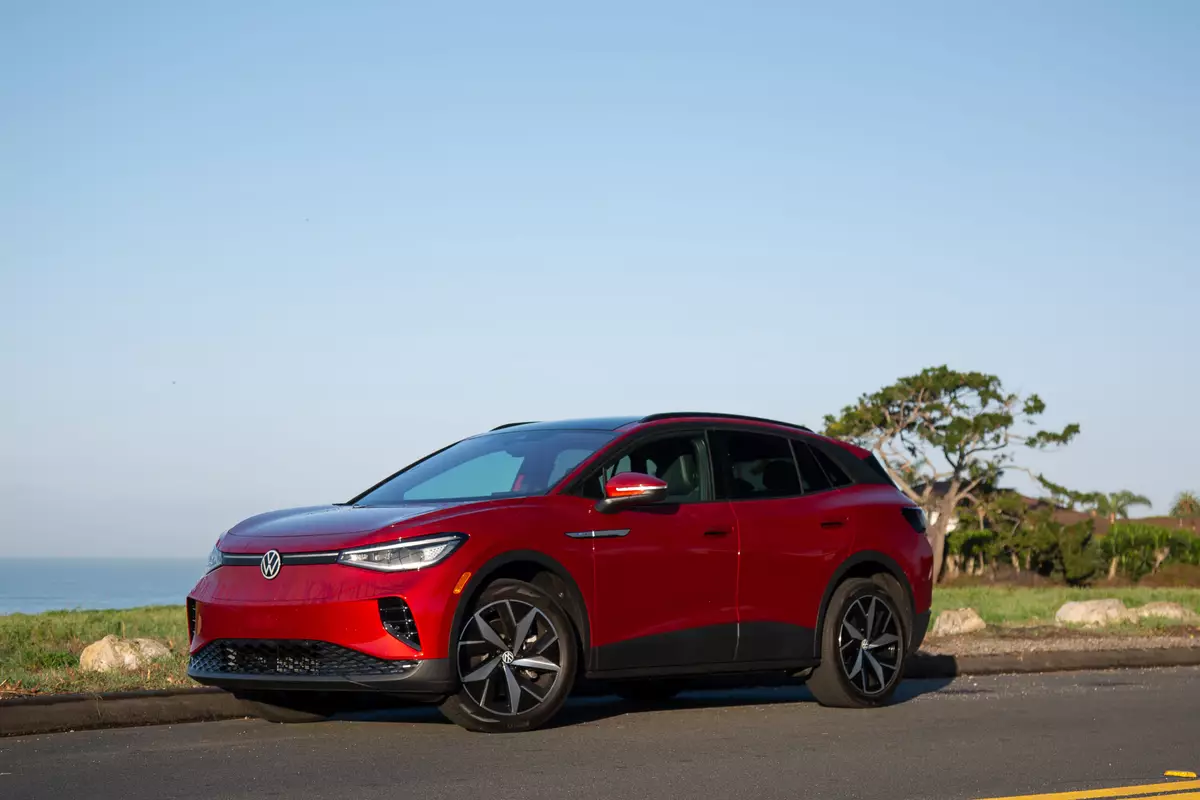
The Volkswagen ID.4 was one of the first all-electric SUVs to arrive in what has since become a much larger segment. The original ID.4 was a solid package, but an extensive update for the 2024 model year brought improvements aimed at keeping the ID.4 better equipped to compete with worthy opponents like the Ford Mustang Mach-E, Hyundai Ioniq 5 and Kia EV6. For 2025, the ID.4 gets some equipment changes.
Related: 2024 Volkswagen ID.4 Review: Biggest Changes for the Biggest Battery
- ${price_badge()}
- ${battery_badge()}${ev_report_link()}
- ${hot_car_badge()}
- ${award_badge()}
- ${cpo_badge()}
${price_badge_description}
The EV Battery Rating is based on this vehicle's current expected range relative to the vehicles expected range when new. ${battery_badge_text}
Certified cars are manufacturer warrantied and typically go through a rigorous multi-point inspection.
This car is likely to sell soon based on the price, features, and condition.
${award_blurb}
${award_two_blurb}
Shop the 2024 Volkswagen ID.4 near you

The most significant mechanical improvements are reserved for variants with the larger 82-kilowatt-hour battery, which utilize a revised powertrain with increased horsepower and range. Inside, there’s a new, larger touchscreen and revised controls aimed at improving ease of use — with mixed results. ID.4s with the standard 62-kWh battery soldier on largely unchanged (though they gain the larger touchscreen for 2025), but they benefit from established ID.4 virtues, including a spacious and comfortable cabin, relaxed driving demeanor and competitive pricing.
Cars.com West Coast Bureau Chief Conner Golden experienced the updates by spending a week with a new ID.4 in the all-wheel-drive Pro S trim, and he found that the revisions addressed some, if not all, of our concerns. Tap the link above for Golden’s expert review, or for a quicker look, read on to learn five things we like about the 2024 Volkswagen ID.4 and two we don’t.
Things We Like
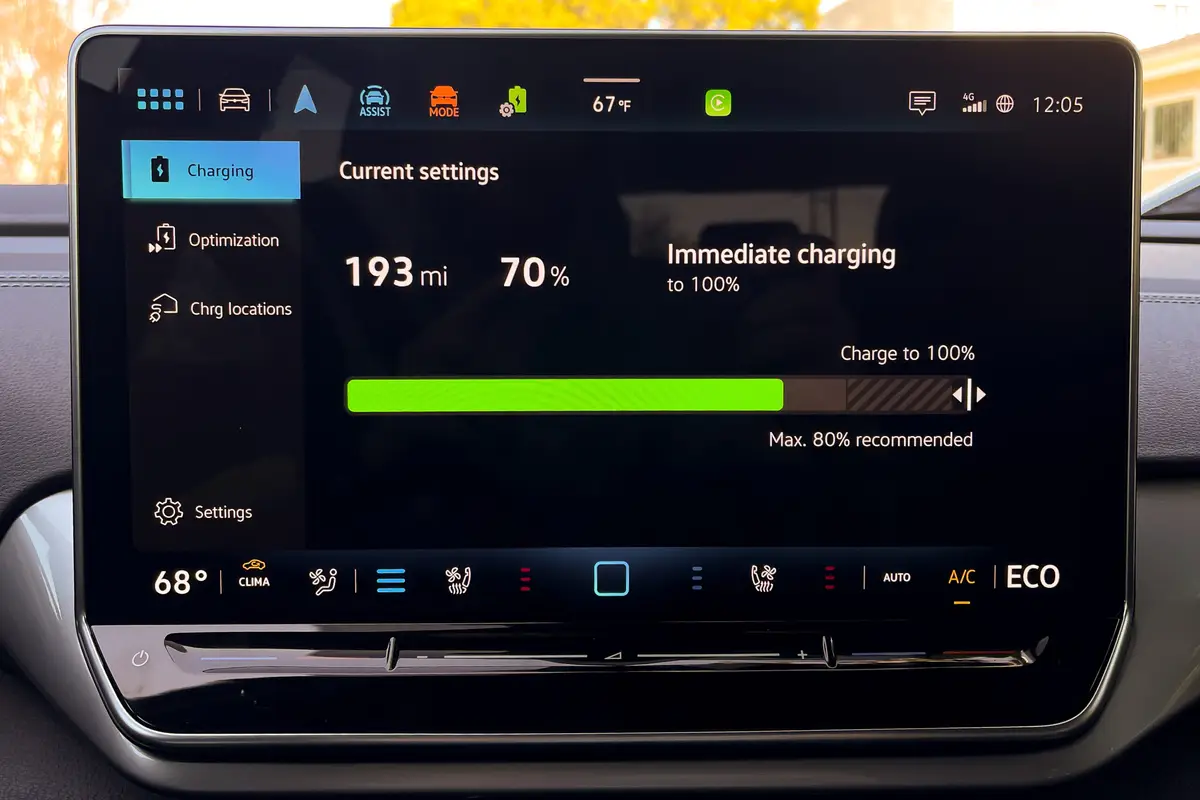
1. Improved Controls
For 2024, all trims but the lower Standard and S get an upgrade from the much-maligned touch-capacitive controls and center touchscreen of previous ID.4s. A new 12.9-inch touchscreen offers faster processing speeds, added customization options and more easily accessed climate controls that remain at the bottom of the screen regardless of what menu is selected. In addition, the clunky dashboard-mounted shifter knob has been replaced with an easier-to-use stalk on the steering column.
2. Better Battery
Tweaks to the available 82-kWh battery result in increased power, addressing another complaint with the previous version. Single-motor ID.4s with rear-wheel drive now crank out 282 hp and 402 pounds-feet of torque, besting the prior model by 81 hp and 173 pounds-feet of torque. Volkswagen claims a 0-60 mph acceleration time of 5.9 seconds. The more powerful dual-motor ID.4s are now good for a total of 335 hp, compared to the previous version’s 295 hp; they can reach 60 mph in a claimed 4.9 seconds.
3. Increased Range
The revised 82-kWh battery also adds increased range. Single-motor RWD versions can now travel up to 291 miles on a full charge, according to the EPA, an increase of 16 miles over the old version. With dual-motor AWD, the ID.4 gets a more modest 8-mile boost in range, to 263 miles. With its 175-kilowatt onboard charger, the ID.4 charges either battery in around 30 minutes when connected to a DC fast charger. When using a Level 2 charger, the larger battery can be fully charged in about eight hours, whereas the smaller battery takes about six hours.
4. Comfortable Cruiser
As with other electric vehicles, the ID.4’s battery pack sits under the floor, resulting in a lower center of gravity. That helps deliver a comfortable ride and secure handling, if not a particularly sporting experience, in Volkswagen’s electric SUV. Though repeated rough patches can cause some choppiness, most bumps are easily absorbed with little fuss, and the ID.4 delivers a largely quiet and controlled ride.
5. Nicely Priced
The Standard and S trims with the smaller battery didn’t get the larger touchscreen and increased power of their larger-battery counterparts for 2024, but frugal buyers can console themselves knowing that the entry-level variants are the least expensive by a considerable margin. A base 2024 ID.4 starts at a reasonable $41,160 (all prices include destination); that jumps to a still-competitive $55,300 for a Pro S with AWD. (For 2025, ID.4s with the larger battery start at $46,520.)
More From Cars.com:
- 2025 Volkswagen ID.4 Resumes Production With Larger Battery Pack, Starts at $46,520
- Which Fuel-Efficient Vehicles Are Most Available?
- 2024 Best Cars for Car Seats
- What’s Bidirectional Charging and Which EVs Offer It?
- Research the Volkswagen ID.4
Things We Don’t Like

1. Touch Sliders
The revised controls make the ID.4 easier to live with, but some quirkiness remains. Our biggest gripe is that Volkswagen chose to stick with annoying capacitive touch-slider controls for temperature and audio volume. These are not always easy to operate and can be particularly tricky while driving; at least they’re backlit on ID.4s with the larger touchscreen; lower trims require fumbling to operate at night.
2. Not Quite One-Pedal Driving
Like other European automakers, Volkswagen chose to forgo the true one-pedal driving experience that some EV drivers prefer, a setup that maximizes the amount of braking provided by the motor for increased efficiency. Instead, moving the shifter to the regen-focused B mode is the only motor-resistance option; it’s not as aggressive as some other regenerative systems and won’t bring the car to a complete stop. Worse, the system can be tricky to smoothly combine with conventional braking, making it a challenge to bring the ID.4 to a smooth stop.
Related Video:
Cars.com’s Editorial department is your source for automotive news and reviews. In line with Cars.com’s long-standing ethics policy, editors and reviewers don’t accept gifts or free trips from automakers. The Editorial department is independent of Cars.com’s advertising, sales and sponsored content departments.
Featured stories
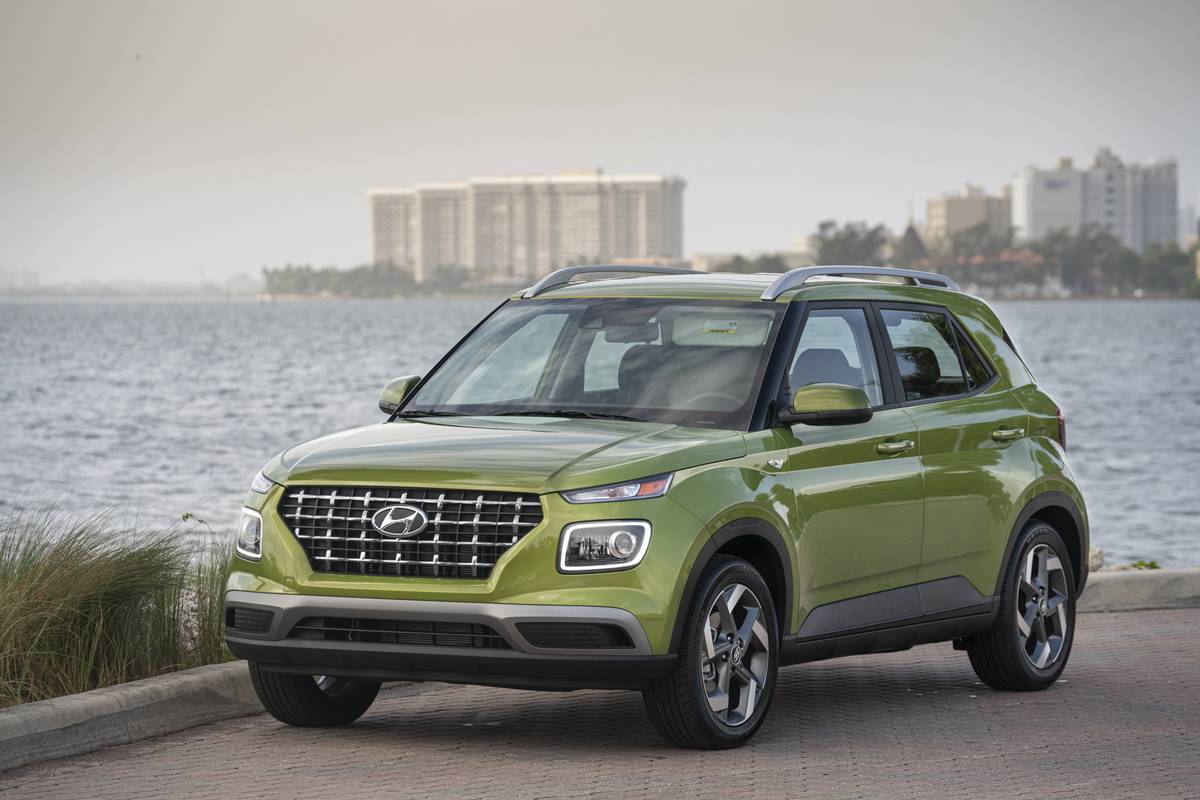
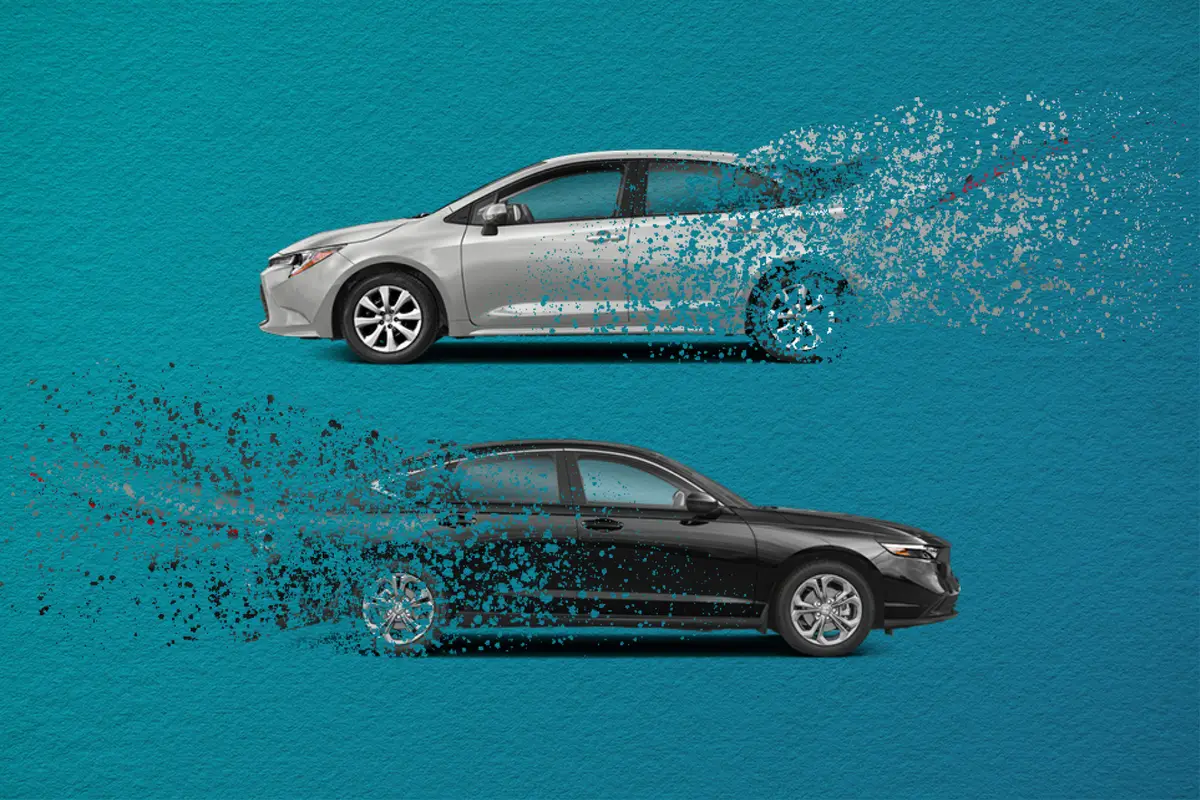
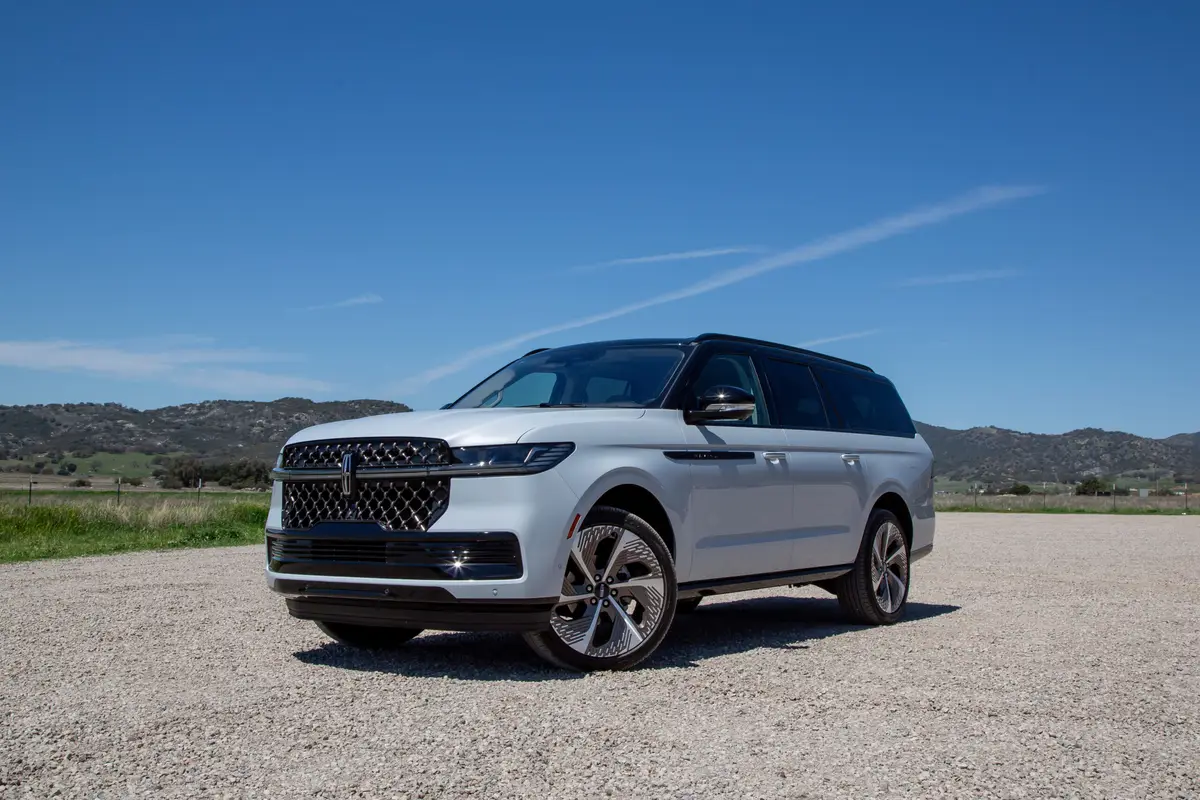
2025 Lincoln Navigator Review: Elephantine Elegance

